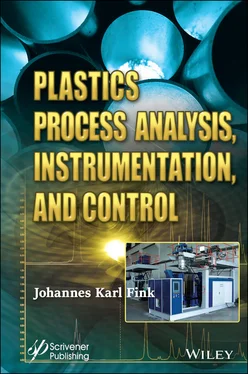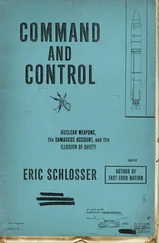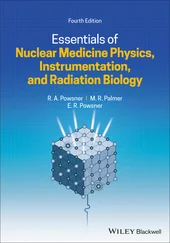The complexity-based models were developed and tested with empirical data for thirty injection molded parts from different suppliers and was found to have a highly significant correlation with mold costs and tooling lead times. Models for estimating material and processing costs and yield at the early stages of design are also developed. The developed methods enable real-time evaluation of the effects of a product design on its tooling cost, tooling lead time, processing costs, and yield at the early stages of design (2).
1.3.2 Cost Prediction Models
With the recent evolution of additive manufacturing, accurate cost prediction models are of increasing importance to assist decision-making during product development tasks (3). Estimating the cost is a challenging task in that it requires a vast amount of manufacturing knowledge in which many aspects, from design to production, need to be synchronized. As a result, various additive manufacturing cost models have been developed.
The state of the art in product cost estimation covering various techniques and developed methodologies has been reviewed (4). The overall work can be categorized into qualitative and quantitative techniques. The qualitative techniques are further subdivided into intuitive and analogical techniques, and the quantitative ones into parametric and analytical techniques. Also, the importance of cost estimation in the early phases of the design cycle is discussed in the review (4). The cost classification techniques are summarized in Table 1.1.
Also, more recently, an overview was presented of the costing models being developed and utilized associated with the additive manufacturing product development phases (3). Here, it was observed that the contexts and views described during the development of the models were often targeted at specific applications as well as technologies and were classified in many ways. Accordingly, different aspects of the cost estimation classification technique were detailed and definitions of some of the key terminologies were reported.
Since 2006, a total of ten review works related to costing in additive manufacturing were reported in which each differed significantly in terms of their scope. These works are collected in Table 1.2.
Table 1.1 Cost classification techniques (3).
| Classification techniques |
Definition |
| Method-based |
Qualitative: Intuitive |
Based on the experience of the estimator |
| Qualitative: Analogy |
Based on historical data. A comparison is often made between old parts and new parts during estimation |
| Quantitative: Parametric |
Based on statistical regression expression where variables are referred to as cost drivers |
| Quantitative: Analytical |
Based on product decomposition into units, operations, or activities that relate to how to manufacture the product |
| Task-based |
Design-oriented |
Based on design-related activities |
| Process-oriented |
Based on the process of commissioning the product development activities covering production-related and post-processing costs |
| Level-based |
Process-level |
Based on the production cost, which involves entire product development phases (pre-processing, production and post-processing) |
| System-level |
Based on product life cycle that covers supply chain, operation management and system-level services |
1.4 Miniature Molding Processes
In a chapter of a monograph, particular processing strategies and techniques for injection molding of precision parts, thin wall parts, microstructured parts, and microparts have been described (5).
The importance of incorporating size effects into the filling simulation of microcavities has been demonstrated. The standard injection molding simulation and special simulation needs for miniature molding processes have been discussed (5).
1.5 Computer Determination of Weld Lines in Injection Molding
A weld line is one of the most commonly seen defects in an injection molding process. It is the line where two polymer melt fronts weld together, or a melt front splits and comes back and welds together during the filling stage (6).
A weld line greatly affects the appearance and mechanical properties of final injection molded parts (7).
The surface of the weld line may contain small V-notch cracks, and these crack-like features are often visible to the naked eye and therefore they are considered aesthetically unacceptable in many applications, especially when using high-gloss polymers. More importantly, the polymers at the weld line do not bond perfectly, and this can cause a weak area in a molded part which can cause breakage when the part is under stress (8).
So, a weld line is aesthetically unpleasant and affects the mechanical strength of injection molded parts (9). Various studies have been performed related to the optimization of weld lines.
A weld line computer determination method based on filling simulation with surface model has been proposed, from which the positions and lengths of the weld lines can be predicted.
According to the characteristics of the surface model, all weld lines can be classified into two different types. Initial welding node searching and revision algorithms for the two different types of weld lines were developed. Starting from initial welding nodes, weld lines are then extended by a pre-extension algorithm and an extension algorithm.
Table 1.2 Recent review articles and their targeted scope (3).
| Year |
Scope |
Reference |
| 2006 |
Generic hierarchical cost estimation classification |
(4) |
| 2009 |
Web-based system for rapid prototyping and traditional manufacturing. Briefly highlighted the cost models utilization |
(10) |
| 2014 |
Categorized additive manufacturing costs by their processes and materials, which were subdivided into ill-structured costs, well-structured costs and product enhancements and quality |
(11) |
| 2016 |
In-depth discussion of cost methodology used in product development process. No classification technique proposed. |
(12) |
| 2016 |
Covered industrial sector related to the materials and management. Briefly reviewed additive manufacturing costing models |
(13) |
| 2016 |
Provided updated estimate of the value related to the supply chain |
(14) |
| 2016 |
Described cost models as a subset of design for additive manufacturing |
(15) |
| 2017 |
Focused on defense support services and categorized the cost models into intuitive, analogical and analytical approaches |
(16) |
| 2017 |
Focused on operation management where the strengths and weaknesses of the models were discussed. Included a general review of additive manufacturing |
(17) |
| 2019 |
Provided a broader review on additive manufacturing technologies, additive manufacturing cost models, spare part digitalization and environmental effects for the aviation industry |
(18) |
In the weld line extension algorithm, 135° is set as a welding angle threshold for forming weld lines. Finally, the effects of cavity thickness, process parameters, and mesh densities have been investigated. Moreover, moldflow simulation results and real parts in production have been conducted to verify the proposed determination method, which demonstrate that the proposed method is correct and effective in actual production (9).
1.6 Extrusion Blow Molding
Читать дальше












